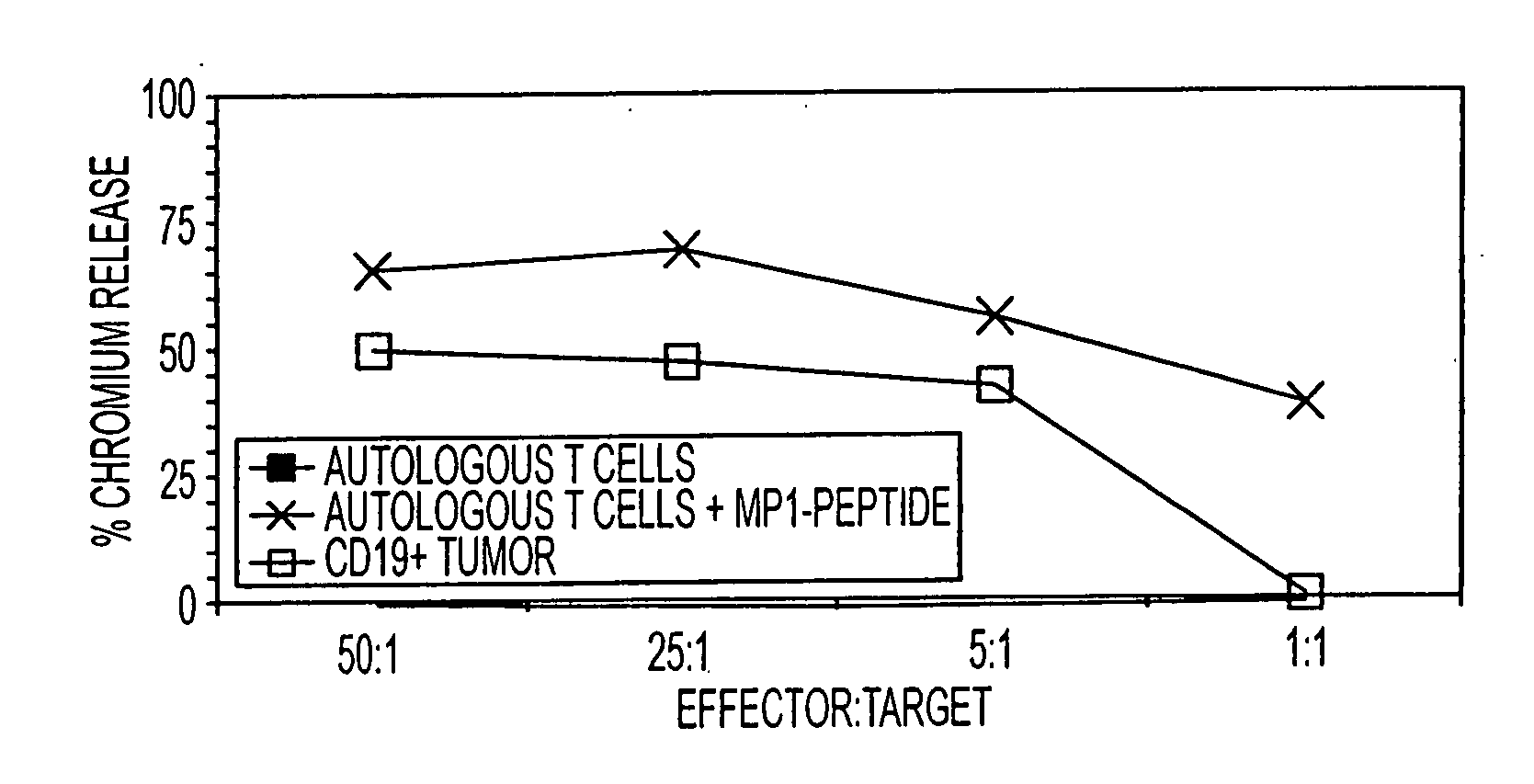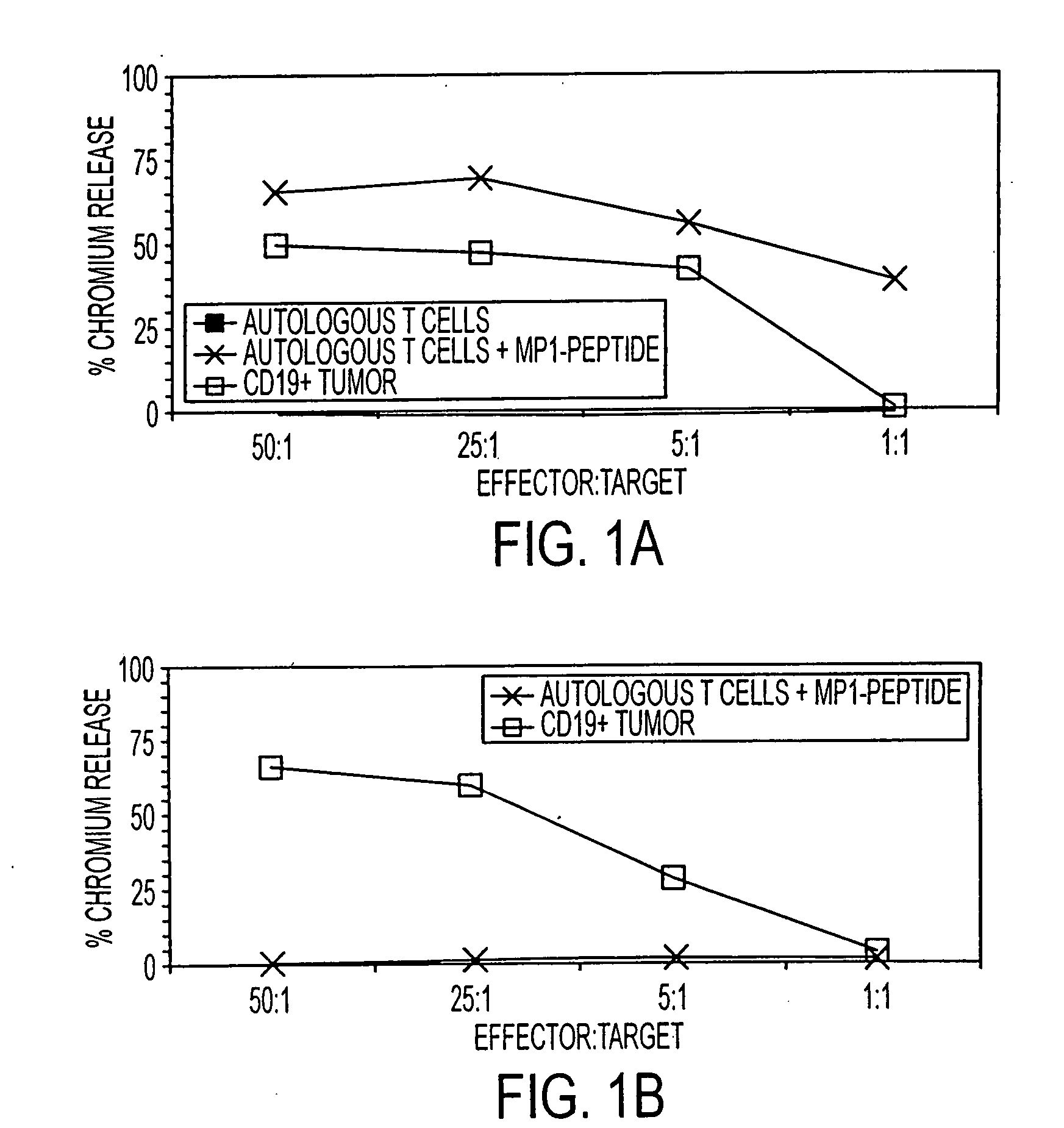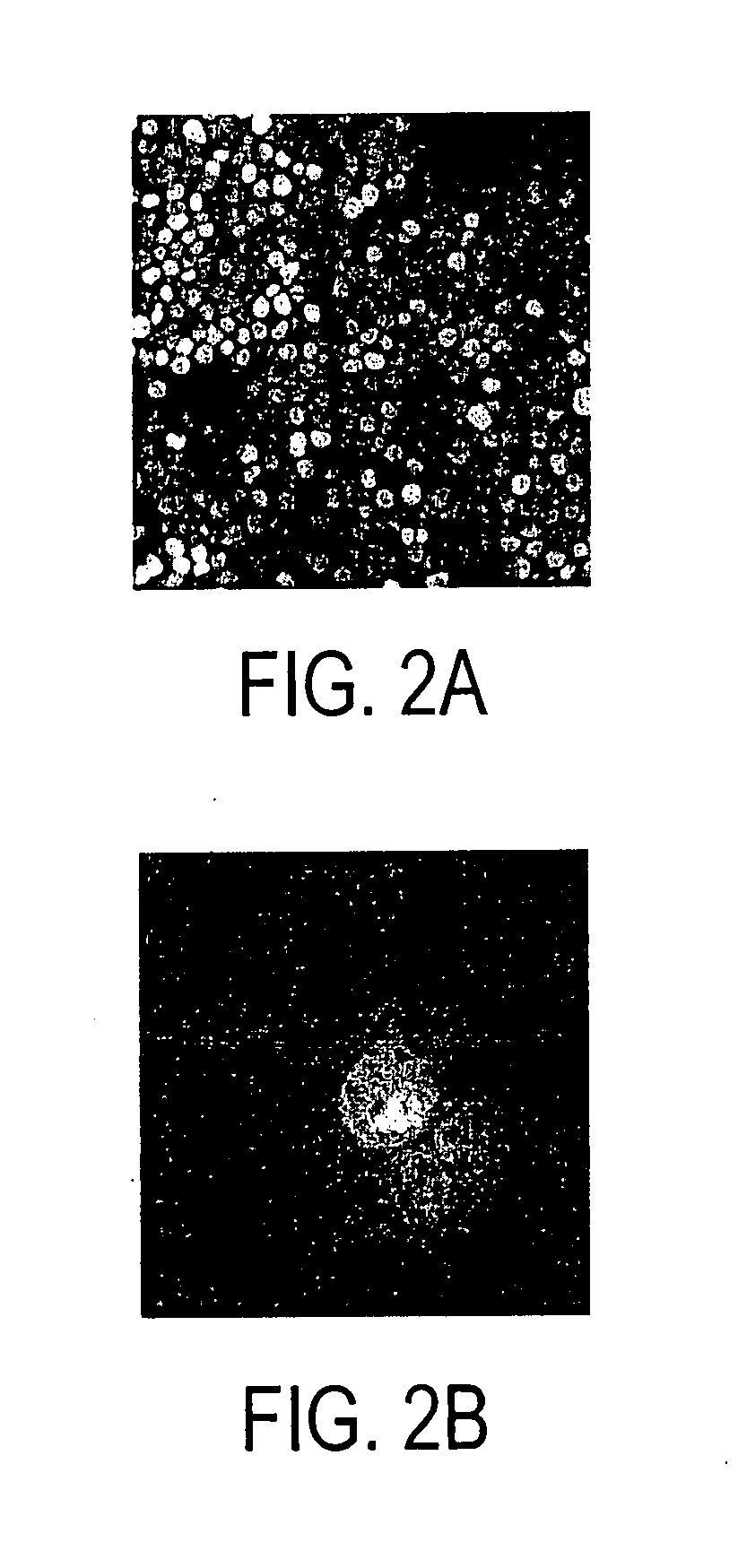Mammalian antigen-presenting T cells and bi-specific T cells
a technology of antigen-presenting t cells and t cells, which is applied in the field of mammalian bispecific t cells, can solve the problems of high risk of disease death, low complete response rate or high incidence of early relapse in patients, and achieve the effect of maintaining in vivo function long-term
- Summary
- Abstract
- Description
- Claims
- Application Information
AI Technical Summary
Benefits of technology
Problems solved by technology
Method used
Image
Examples
example 1
Generation of T Cells Expressing MP1 Antigen
[0094] To avoid exposure to infectious virus and circumvent the use of soluble MP1-derived peptide(s), which may not bind to all classical HLA class I antigens, HLA A2+ antigen presenting (AP)-T cells were genetically modified by non-viral gene transfer with the DNA plasmid HyMP1-pMG. Hygromycin phosphotransferase (Hy), which confers resistance to the antibiotic hygromycin B in E. coli and mammalian cells, was expressed from the pMGˆPac vector. This vector is a modification of the pMG vector (InvivoGen, San Diego, Calif.) by site-directed mutagenesis to remove a Pac I RE site at position 307. See FIG. 4.
[0095] The Hy gene plasmid in pMGˆPac was changed to Kanamycin / G418-resistance gene to generate the plasmid intermediate pKEN. Subsequent deletion of the neomycin phosphotransferase gene produced the plasmid pEK. This plasmid was used to express the HyMP1 gene, a fusion of a 972 base pair (bp) fragment of the Hy gene from the DNA plasmid ...
example 2
In Vitro T-Cell Culture System to Expand MP1-Specific CD8+ T Cells using Autologous T Cells Presenting MP1
[0108] A kinetic study determined whether the HyMP1-expressing, genetically modified AP-T cells could directly stimulate expansion of CD8+ MP1-specific T cells in vitro. During three weeks of co-culture with irradiated autologous AP-T cells expressing the HyMP1 gene, flow cytometry was used to demonstrate the expansion of MP1-tetramer+ T cells from a HLA A2+ healthy volunteer donor. HLA A2+ PBMC were co-cultured for 21 days in the presence of low-dose IL-2 (A) without the addition of autologous AP-T cells, or with a 5:1 (Responder:Stimulator) T-cell ratio of γ-irradiated hygromycin-resistant (B) Hy+ AP-T cells (that do not express MP1), or (C) γ-irradiated HyMP1+ AP-T cells. AP-T cells were re-added to the culture system every 7 days. Binding of a control CMV pp65-tetramer on day 21 was negligible. Dead cells were excluded from analysis upon uptake of propidium iodide (PI).
[01...
example 3
MP1-Specific T Cells can be Genetically Modified to Express a CD19-Specific Chimeric Immunoreceptor
[0114] To determine if MP1-specific T cells could be rendered specific for CD19, the CD19R gene was introduced into MP1-tetramer+ T cells. This genetic modification of T cells was accomplished using non-viral electrotransfer of a DNA expression plasmid designated CD19R / HyTK-pMG which codes for both CD19R and a bifunctional fusion gene thaT combines hygromycin phosphotransferase and herpes virus thymidine kinase (HyTK). The specificity of CD19R is derived from the variable regions of a mouse monoclonal antibody (mAb) specific for CD19, tethered to the T cell via a modified human IgG4 hinge and Fc-fragment attached to the human CD4 transmembrane domain. Upon binding CD19, the genetically modified T cells are activated via the cytoplasmic CD3-ζ chain attached to the chimeric immunoreceptor.
[0115] HLA A2+ T cells were expanded on autologous HyMP1+ AP T cells, FACS sorted for binding to M...
PUM
| Property | Measurement | Unit |
|---|---|---|
| concentrations | aaaaa | aaaaa |
| pH | aaaaa | aaaaa |
| concentrations | aaaaa | aaaaa |
Abstract
Description
Claims
Application Information
 Login to View More
Login to View More - R&D
- Intellectual Property
- Life Sciences
- Materials
- Tech Scout
- Unparalleled Data Quality
- Higher Quality Content
- 60% Fewer Hallucinations
Browse by: Latest US Patents, China's latest patents, Technical Efficacy Thesaurus, Application Domain, Technology Topic, Popular Technical Reports.
© 2025 PatSnap. All rights reserved.Legal|Privacy policy|Modern Slavery Act Transparency Statement|Sitemap|About US| Contact US: help@patsnap.com



